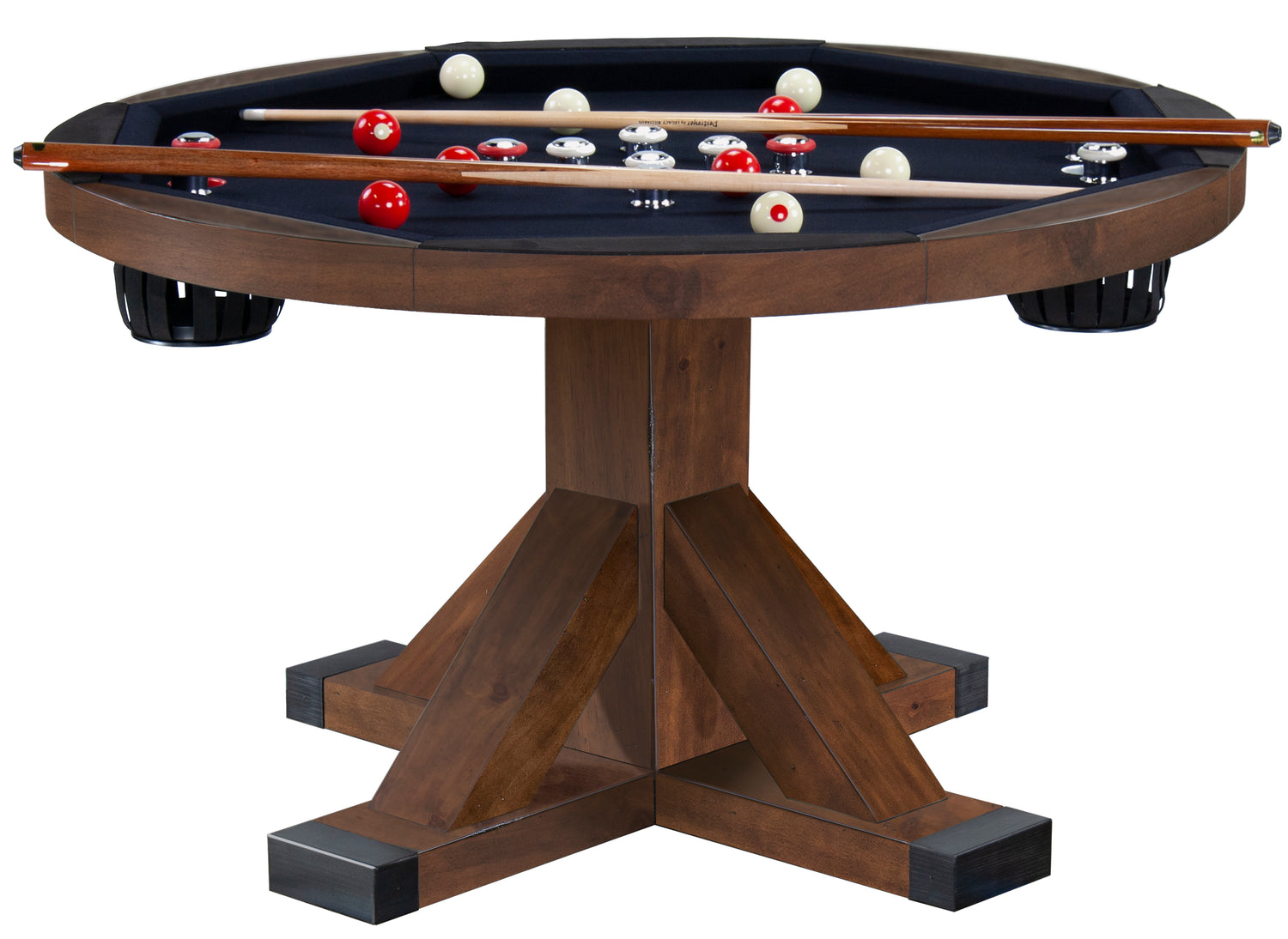
In the 1400s, in England, people there played a game called “shove-groat”, which involved sliding a large silver coin, called a ‘groat’, down a table. As the game evolved, it took on other names such as "shoveboard", “shovelboard","slidegroat" “shovelpenny" or “shove ha’penny” (meaning shove half-penny). The game also evolved as areas of the table began being marked for the coins to stop, allowing players to increase their score. The game gained an unsavory reputation, being associated with excessive drinking and gambling on the winners. As it was keeping men away from their jobs, King Henry VIII decreed that the game could only be legally played by aristrocrats. The prohibition was not effective in the long-term, however, and by the 1600s, shuffleboardwas again popular in the taverns.
Shuffleboard was also enjoyed by the first colonists of America, as well as the English soldiers. The first written documented history of shuffleboard in America comes from the play titled “The Crucible”, which notes "In 1692, there was a good supply of ne'er-do-wells who dallied at the shuffleboard in Bridget Bishop's Tavern.”
As the popularity of the game spread, an innkeeper in New Hanover, Pennsylvania named John Bishop was accused of running a gambling game in his establishment, which resulted in an 1848 legal case that asked the question of whether shuffleboard was a game of chance or a game of skill. The judge deemed that the game was indeed one of skill, and the now-legal game enjoyed newfound popularity.
Approaching the 20th century, table shuffleboard was demanding as much ink in New York City newspapers as boxing and baseball. Tournaments were popular, drawing a range of interesting competitors such as George Lavender, Ed Gardland, Alex Scott, Dave Wiley, and “Big Ed” Morris. Not only were tournaments held in New York but also in surrounding areas such as Newark, Hoboken, Bloomfield, and New Jersey. There were even tournaments as far away as Philadelphia. Fans came from a variety of age groups as well as socioeconomic backgrounds. The game spread around the country, and by 1904 it had made its way to California, courtesy of an avid player named Jim Corbett, who had a tavern owner install what was reputed to be the first table in state.
During the war times of the 1940s, shuffleboard provided a sense of release, and its base of players grew. Some played a highly competitive game, while others played it for fun. It was also in the 1940s shuffleboard went Hollywood. While initially used as a source of publicity, when Hollywood stars found themselves actually enjoying the game, and it wasn’t long before prominent celebrities such as Betty Grable and Merv Griffin had their own tables installed in their homes.
By the 1950s, many manufacturers of shuffleboards were sponsoring their own nationwide tournaments. As a league sport, the game suffered during the 60s and 70s, due to variety of reasons including intense competition by different manufacturers, a lack of standard rules, and a lack of sponsorship. By the mid-80s, however, shuffleboard began to see a revival. Currently, established shooters are working with the young shooters to develop their skills, as they are seen as the future of the sport. Shuffleboard is also popular in bars and in homes, as it is seen as a great and fun way to spend time with friends.


